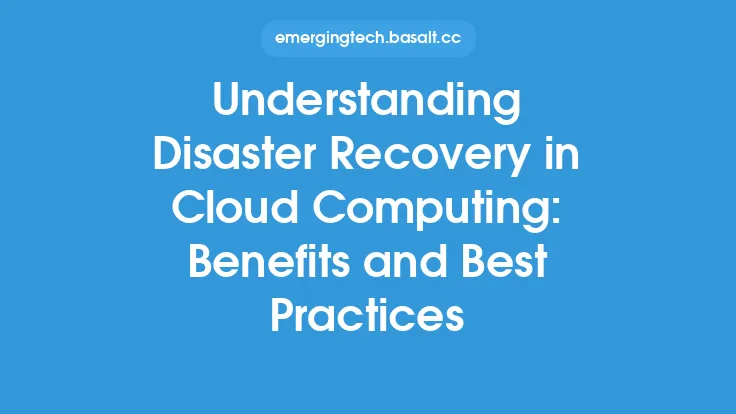As organizations continue to migrate their applications and services to the cloud, optimizing cloud network performance has become a critical aspect of ensuring the reliability, scalability, and security of their operations. Cloud networking refers to the use of cloud-based infrastructure to connect and manage network resources, and it offers numerous benefits, including reduced costs, increased flexibility, and improved scalability. However, optimizing cloud network performance requires careful planning, design, and management to ensure that network resources are utilized efficiently and effectively.
Introduction to Cloud Network Optimization
Cloud network optimization involves a range of techniques and strategies aimed at improving the performance, reliability, and security of cloud-based networks. This includes optimizing network architecture, configuring network settings, and monitoring network performance in real-time. By optimizing cloud network performance, organizations can improve the user experience, reduce latency, and increase productivity. Additionally, optimized cloud networks can help organizations to better utilize their network resources, reduce costs, and improve their overall competitiveness.
Assessing Cloud Network Performance
Assessing cloud network performance is a critical step in optimizing cloud network performance. This involves monitoring network performance metrics, such as latency, packet loss, and throughput, to identify areas of improvement. Organizations can use various tools and techniques, including network monitoring software, to assess cloud network performance and identify bottlenecks and areas of congestion. By assessing cloud network performance, organizations can identify opportunities for optimization and make data-driven decisions to improve network performance.
Best Practices for Optimizing Cloud Network Performance
There are several best practices that organizations can follow to optimize cloud network performance. These include:
- Optimizing network architecture: This involves designing a network architecture that is optimized for cloud-based applications and services. This may include using a hub-and-spoke architecture, where all network traffic is routed through a central hub, or a mesh architecture, where all network devices are interconnected.
- Configuring network settings: This involves configuring network settings, such as Quality of Service (QoS) policies, to ensure that network traffic is prioritized and routed efficiently.
- Monitoring network performance: This involves monitoring network performance in real-time to identify areas of improvement and optimize network settings accordingly.
- Using content delivery networks (CDNs): CDNs can help to improve network performance by caching frequently accessed content at edge locations, reducing the distance that data needs to travel and improving page load times.
- Implementing security measures: This involves implementing security measures, such as firewalls and intrusion detection systems, to protect against cyber threats and ensure the security and integrity of cloud-based networks.
Optimizing Cloud Network Security
Optimizing cloud network security is a critical aspect of optimizing cloud network performance. This involves implementing security measures, such as firewalls and intrusion detection systems, to protect against cyber threats and ensure the security and integrity of cloud-based networks. Organizations can also use encryption technologies, such as SSL/TLS, to protect data in transit and ensure the confidentiality and integrity of cloud-based communications. Additionally, organizations can implement identity and access management (IAM) systems to control access to cloud-based resources and ensure that only authorized users have access to sensitive data and applications.
Using Automation and Orchestration to Optimize Cloud Network Performance
Automation and orchestration can play a critical role in optimizing cloud network performance. By automating routine network tasks, such as configuration and provisioning, organizations can improve network efficiency and reduce the risk of human error. Orchestration tools can also be used to manage and coordinate network resources, ensuring that network settings are optimized and consistent across the network. Additionally, automation and orchestration can help organizations to respond quickly to changing network conditions, such as congestion or outages, and ensure that network performance is optimized in real-time.
Conclusion
Optimizing cloud network performance is a critical aspect of ensuring the reliability, scalability, and security of cloud-based operations. By following best practices, such as optimizing network architecture, configuring network settings, and monitoring network performance, organizations can improve the user experience, reduce latency, and increase productivity. Additionally, by implementing security measures, using automation and orchestration, and leveraging technologies such as CDNs, organizations can ensure that their cloud-based networks are optimized for performance, security, and reliability. As cloud computing continues to evolve and grow, optimizing cloud network performance will become increasingly important for organizations that rely on cloud-based applications and services to drive their operations.





